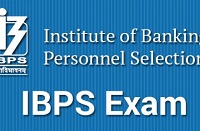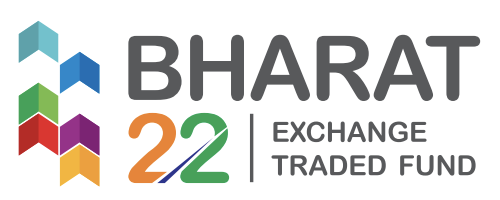IMPORTANT BANKING TERMS-ABBREVIATION PART-I
IMPORTANT BANKING TERMS-ABBREVIATION PART-I
- RTGS- Real Time Gross Settlement
- Real Time Gross Settlement, which can be defined as the continuous (real-time) settlement of funds transfers individually on an order by order basis. ‘Real Time’ means the processing of instructions at the time they are received rather than at some later time; ‘Gross Settlement’ means the settlement of funds transfer instructions occurs individually.
- The RTGS system is primarily meant for large value transactions. The minimum amount to be remitted through RTGS is ` 2 lakh. There is no upper ceiling for RTGS transactions.
- Under normal circumstances the beneficiary branches are expected to receive the funds in real time as soon as funds are transferred by the remitting bank. The beneficiary bank has to credit the beneficiary’s account within 30 minutes of receiving the funds transfer message.
- NEFT-National Electronic Fund Transfer
- National Electronic Funds Transfer (NEFT) is a nation-wide payment system facilitating one-to-one funds transfer. Under this Scheme, individuals, firms and corporate can electronically transfer funds from any bank branch to any individual, firm or corporate having an account with any other bank branch in the country participating in the Scheme.
- There is no limit – either minimum or maximum – on the amount of funds that could be transferred using NEFT.
- However, maximum amount per transaction is limited to ₹ 50,000/- for cash-based remittances within India and also for remittances to Nepal under the Indo-Nepal Remittance Facility Scheme.
- VPA-Virtual Payment Address
- The Virtual Payment Address is an address given to the user of UPI Payment system.VPA can be used to transfer funds. We don’t need any details like bank account number, IFSC Code etc., to transfer money Virtual Payment Address replaces the bank account details.
- IPO- Initial Public Offering
- An initial public offering (IPO) is the first time that the stock of a private company is offered to the public. IPOs are often issued by smaller, younger companies seeking capital to expand, but they can also be done by large privately owned companies looking to become publicly traded. In an IPO, the issuer obtains the assistance of an underwriting firm, which helps determine what type of security to issue, the best offering price, the amount of shares to be issued and the time to bring it to market.
- An IPO is also referred to as a public offering. When a company initiates the IPO process, a very specific set of events occurs. The chosen underwriters facilitate all of these steps.
- An external IPO team is formed, consisting of an underwriter, lawyers, certified public accountants (CPAs) and Securities and Exchange Commission (SEC) experts.
- FPO-Follow on Public Offer
- A follow-on public offer (FPO) is the issuance of shares to investors by a public company that is currently listed on a stock market exchange. An FPO is a stock issue of additional shares made by a company that is already publicly listed and has gone through the IPO process. FPOs are popular methods for companies to raise additional equity capital in capital markets through an issue of stock.
- A follow-on public offer (FPO) is also called further public offer. When a listed company comes out with a fresh issue of shares or makes an offer for sale to the public to raise funds it is known as FPO.
- NDTL-Net Demand and Time Liabilities
- NDTL is sum of demand and time liabilities (deposits) of banks with public and other banks wherein assets with other banks is subtracted to get net liability of other banks.
- Deposits of banks are its liability and consist of demand and time deposits of public and other banks. Demand and time deposits from public form the largest part of bank deposits.
- Demand deposits include all liabilities which are payable on demand and includes current deposits, demand liabilities portion of savings bank deposits, demand drafts, balances in overdue fixed deposits etc.
- Time deposits are those which are payable otherwise on demand and includes fixed deposits, staff security deposits, time liabilities portion of savings bank deposits etc.
- Banks also invest in demand and time deposits of other banks and certificate of deposits. Banks also borrow from other banks in call market etc. This represents banks liability to other banks.
- PCA-Prompt Corrective Action
- To ensure that banks don’t go bust, RBI has put in place some trigger points to assess, monitor, control and take corrective actions on banks which are weak and troubled. The process or mechanism under which such actions are taken is known as Prompt Corrective Action, or PCA.
- BCBS-Basel Committee on Banking Supervision
- The Basel Committee on Banking Supervision (BCBS) is the primary global standard setter for the prudential regulation of banks and provides a forum for cooperation on banking supervisory matters. Its mandate is to strengthen the regulation, supervision and practices of banks worldwide with the purpose of enhancing financial stability.
- CAR-Capital Adequacy Ratio
- Capital Adequacy Ratio (CAR) is also known as Capital to Risk (Weighted) Assets Ratio (CRAR), is the ratio of a bank’s capital to its risk. National regulators track a bank’s CAR to ensure that it can absorb a reasonable amount of loss and complies with statutory Capital requirements. It is a measure of a bank’s capital. It is expressed as a percentage of a bank’s risk weighted credit exposures.
- This ratio is used to protect depositors and promote stability and efficiency of financial systems around the world.
10.RWA-Risk Weighted Assets
- Risk-weighted assets are used to determine the minimum amount of capital that must be held by banks and other institutions to reduce the risk of insolvency. The capital requirement is based on a risk assessment for each type of bank asset. For example, a loan that is secured by a letter of credit is considered to be riskier and requires more capital than a mortgage loan that is secured with collateral.
11.CIBIL- Credit Information Bureau (India) Limited
- Credit Information Bureau (India) Limited, commonly known as CIBIL, is India’s first Credit Information Company or Credit Bureau. It maintains records of all credit-related activity of individuals and companies including loans and credit cards.
- The records are submitted to CIBIL by registered member banks and other financial institutions on a periodic (usually monthly) basis. Based on this data, CIBIL issues a Credit Information Report or CIR (commonly referred to as a credit report) and a credit score.
- CIBIL was founded in 2000 in order to bring greater efficiency and transparency in the credit space. TransUnion International (a global credit bureau) and Dun and Bradstreet (a global provider of credit information) are technical partners of CIBIL in India.
12. SARFAESI- Securitisation and Reconstruction of Financial Assets and Enforcement of Security Interest Act
- The Securitisation and Reconstruction of Financial Assets and Enforcement of Security Interest Act, 2002 (also known as the SARFAESI Act) is an Indian law. It allows banks and other financial institution to auction residential or commercial properties to recover loans. The first asset reconstruction company (ARC) of India, ARCIL, was set up under this act.
- Under this act secured creditors (banks or financial institutions) have manyright for enforcement of security interest under section 13 of SARFAESI Act, 2002. If borrower of financial assistance makes any default in repayment of loan or any installment and his account is classified as Nonperforming Asset by secured creditor, then secured creditor may require before expiry of period of limitation by written notice to the borrower for repayment of due in full within 60 days by clearly stating amount due and intention for enforcement.
- Where he does not discharge dues in full within 60 days, THEN WITHOUT INTERVENTION OF ANY COURT OR TRIBUNAL Secured creditor may take possession (including sale, lease, assignment) of secured asset, or take over management of business of borrower or appoint manager for secured asset or without taking any of these action may also proceed against guarantor or sell the pledged asset, if any.
13. LIBOR- London Inter-bank Offered Rate
- LIBOR or ICE LIBOR (previously BBA LIBOR) is a benchmark rate, which some of the world’s leading banks charge each other for short-term loans. It stands for Intercontinental Exchange London Interbank Offered Rate and serves as the first step to calculating interest rates on various loans throughout the world.
- LIBOR is administered by the ICE Benchmark Administration (IBA), and is based on five currencies: U.S. dollar (USD), Euro (EUR), pound sterling (GBP), Japanese yen (JPY), and Swiss franc (CHF). The LIBOR serves seven different maturities: overnight, one week, and 1, 2, 3, 6 and 12 months.
14. MIBOR- Mumbai Inter-Bank Offer Rate
- The Mumbai Inter-Bank Offer Rate (MIBOR) is one iteration of an interbank rate, which is the rate of interest charged by a bank on a short-term loan to another bank.
- Banks borrow and lend money to one another on the interbank market in order to maintain appropriate, legal liquidity levels, and meet reserve requirements placed on them by regulators. Interbank rates are made available only to the largest and most creditworthy financial institutions.
15.CASA- current account savings account (CASA)
- A current account savings account (CASA) is an attempt to combine savings and checking accounts to entice customers to keep their money in the bank by paying no or very low interest on the current account while the savings portion pays an above-average return.
- They are offered free or for a fee depending on minimum or average balance requirements, and are an attempt to limit the disintermediation that occurs when bank-deposit interest is lower than other available short-term investments. These deposits tend to be cheaper than the bank issuing certificates of deposit (CDs) and are also considered more dependable.
16. FEMA- Foreign Exchange Management Act
- The Foreign Exchange Management Act (1999) or in short FEMA has been introduced as a replacement for earlier Foreign Exchange Regulation Act (FERA). FEMA became an act on the 1st day of June, 2000. FEMA was introduced because the FERA didn’t fit in with post-liberalisation policies. A significant change that the FEMA brought with it, was that it made all offenses regarding foreign exchange civil offenses, as opposed to criminal offenses as dictated by FERA.
- The main objective behind the Foreign Exchange Management Act (1999) is to consolidate and amend the law relating to foreign exchange with the objective of facilitating external trade and payments. It was also formulated to promote the orderly development and maintenance of foreign exchange market in India.
17. FDI- Foreign direct investment
- Foreign direct investment (FDI) is an investment made by a company or individual in one country in business interests in another country, in the form of either establishing business operations or acquiring business assets in the other country, such as ownership or controlling interest in a foreign company.
- Foreign direct investments are distinguished from portfolio investments in which an investor merely purchases equities of foreign-based companies. The key feature of foreign direct investment is that it is an investment made that establishes either effective control of, or at least substantial influence over, the decision making of a foreign business.
18.FII- Foreign Institutional Investor (FII)
- A foreign institutional investor (FII) is an investor or investment fund registered in a country outside of the one in which it is investing. Institutional investors most notably include hedge funds, insurance companies, pension funds and mutual funds.
- The term is used most commonly in India and refers to outside companies investing in the financial markets of India.
19.UPI- Unified Payments Interface
- Unified Payments Interface (UPI) is a system that powers multiple bank accounts into a single mobile application (of any participating bank), merging several banking features, seamless fund routing & merchant payments into one hood.
- It also caters to the “Peer to Peer” collect request which can be scheduled and paid as per requirement and convenience. Each Bank provides its own UPI App for Android, Windows and iOS mobile platform(s).
- BSBDA- Basic Savings Bank Deposit Account (BSBDA)
- Governments across the world are in an enthusiastic mood to launch financial inclusion measures. The return from connecting so far unbanked people to the formal banking system is tremendous. In India, financial inclusion programmes have seriously started with the launch of No Frills account by the RBI in 2005.
- This account offered minimum banking facilities to the new account holder by having a zero balance account. Hence this account became known as zero balance account.
- Later, in 2012, with financial inclusion drive getting higher momentum the RBI has replaced No Frills account with Basic Savings Bank Deposit Account (BSBDA).
- The significant feature of BSBDA is that basic banking services like money transfer and savings can be availed with a simplified KYC norm. Account can be started and maintained with nil balance. Under PMJDY also, the bank account offered is BSBDA.
Click the link given below for more information:
ARTICLES
Click the link given below for Current Affairs:
DAILY CURRENT AFFAIRS




